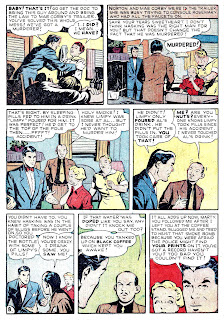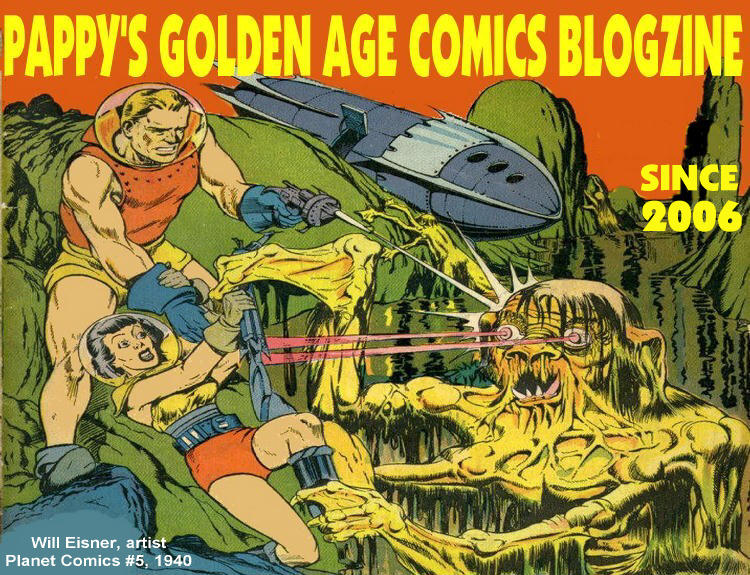
Number 1097
We love Lucey
Harry Lucey was one of the best Archie artists. While Bob Montana was THE artist of the Archie newspaper comic strip, Lucey was the main artist for years on the comic books. He could tell a lot with an expression or a pose.
Sam Hill, Private Eye was another short-lived attempt by the publishers of Archie to supplement their teenage line with other comic book fare. Sam Hill lasted for seven issues in 1950-51, which is about par for Archie. Other comics, such as The Dover Boys, which I showed in Pappy's #870, also drawn by Lucey, had an even shorter run, only two issues. Since this issue of Sam Hill is the only one I have I can't tell you if it's typical of the series, but there really isn't anything in this comic, except for Harry Lucey's artwork, which makes it stand out for me from the run-of-the-mill private eye stories in popular fiction, comic books, radio or television.
Sam Hill seems especially tame when compared to Lucey's earlier work. Consider this Hangman story from Pappy's #572 or the first story in the first issue of Crime Does Not Pay in Pappy's #786.
From Sam Hill, Private Eye #4, 1951:

























































